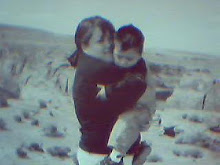Items used:
Two brown bags-the arm
Clothing pin-joint
Silver tape- showing where the muscles are located
Pink highlighter-muscles
Black marker-ligaments
Crayons-Thick Filament
Q-tips- Thin Filament
Fabric Softener-Sarcolemma
Straws-Myofibril
Penny-nucleus
Hair Tie-T Tubule
Chocolate-Troponin
Straw-Actin Filament
Wraps-Tropomyosin
Cheerio- Calcium
Black marks- Myosin Binding Sites
Chocolate- Sensory Receptor
Beans-Cell body
Cookies-Myelin Sheath
Rope- axon
End of the robe- axon terminal
 The image is of a skeletal muscle in the arm. It contains the bones that are in the arm the ulna, radius and the humerus. Also it shows where the muscles are located. When moving the clothing pin around it shows that the arm is moveable.
The image is of a skeletal muscle in the arm. It contains the bones that are in the arm the ulna, radius and the humerus. Also it shows where the muscles are located. When moving the clothing pin around it shows that the arm is moveable.
This image shows what sarcomere looks like when it is relaxed. Sarcomeres are one of many units, arranged linearly within a myofibril, whose contraction produces muscle contraction. It contains two type of protein called myosin, and actin. The Thick filaments contain myosin. The Thin filaments contain actin.

This image shows what happens what the sarcomere are contracted. This is what happens when you tighten your muscles in your arm. Also this is called a sliding filament model, its the movement of actin filament in relation to myosin filament. the ATP supplies the energy for the muscle contractions.
A muscle fiber is a cell containing the usual cellular components. The plasma membrane is called the sarcolemma, the sarcolemma forms T tubules that penetrate into the cells that they come into contract. The sarcoplasmic reticulum encases hundreds and some times even thousands of myofibrils. the sarcoplasm contain glycogen which is energy for the muscle contraction.
Calcium binds to troponin, exposing myosin-binding sites. When calcium ions are released from the sarcoplasmic reticulum they combine with troponin and this causes the tyopomyosin threads to shift their position, exposing myosin-binding sites. The second image is when the muscles are contracted meaning the muscle has been pulled. Calcium ions are essential for muscle contraction.

This image is showing the neuron structure. The Myelin sheath contains Schwann cells. This image works with the CNS (central nervous system), which sends signals to the sensory fiber to move the muscle. There is three steps the nervous system does to function, which is to: sensory neurons, interneuron and motor neurons. The sensory neurons take nerve impulses from sensory receptors to the CNS. Interneuron occurs within the CNS. Then the motor neurons take nerve impulses from the CNS to the muscles.
Conclusion:
Each picture represents a function in the body to move the muscle. Each explains what function does to make the movement and what is involved with muscle contractions.
I thought this lab was more difficult than the other units because it was actually making an arm and making it move!! I did not have any way of showing a video of the arm moving but if you look closely to the picture it can move. Overall this was a good way of understand the muscle and it’s movements.




No comments:
Post a Comment